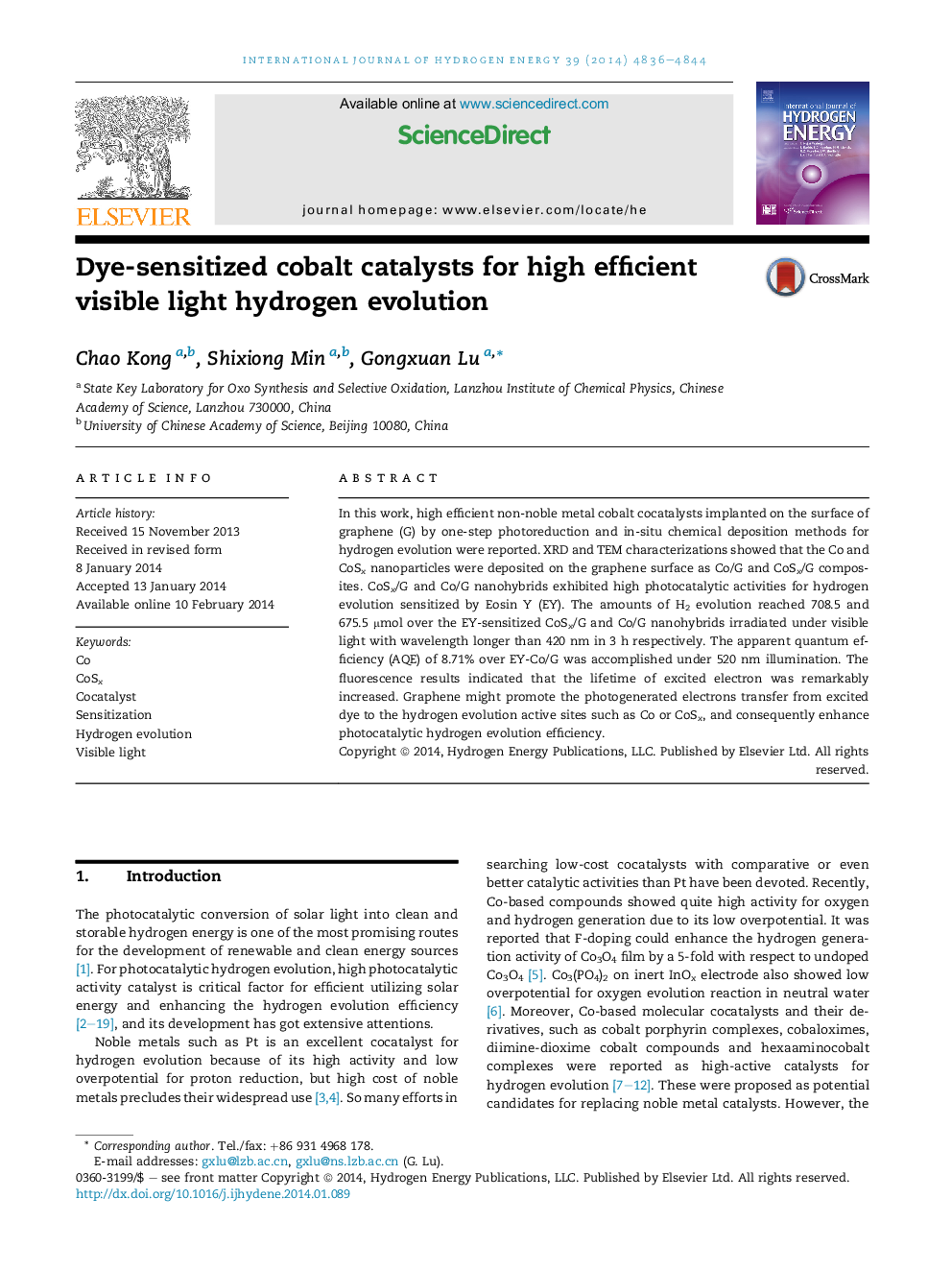| Article ID | Journal | Published Year | Pages | File Type |
|---|---|---|---|---|
| 1281249 | International Journal of Hydrogen Energy | 2014 | 9 Pages |
•Co/G (graphene) and CoSx/G were prepared by one-step photoreduction and in-situ chemical deposition method respectively.•CoSx/G and Co/G exhibited high photocatalytic activities for hydrogen evolution under visible light irradiation.•Co/G had comparative photocatalytic performance and stability with Pt/G at pH 10.•The apparent quantum efficiency (AQE) of 8.71% over EY-Co/G was accomplished under 520 nm illumination.
In this work, high efficient non-noble metal cobalt cocatalysts implanted on the surface of graphene (G) by one-step photoreduction and in-situ chemical deposition methods for hydrogen evolution were reported. XRD and TEM characterizations showed that the Co and CoSx nanoparticles were deposited on the graphene surface as Co/G and CoSx/G composites. CoSx/G and Co/G nanohybrids exhibited high photocatalytic activities for hydrogen evolution sensitized by Eosin Y (EY). The amounts of H2 evolution reached 708.5 and 675.5 μmol over the EY-sensitized CoSx/G and Co/G nanohybrids irradiated under visible light with wavelength longer than 420 nm in 3 h respectively. The apparent quantum efficiency (AQE) of 8.71% over EY-Co/G was accomplished under 520 nm illumination. The fluorescence results indicated that the lifetime of excited electron was remarkably increased. Graphene might promote the photogenerated electrons transfer from excited dye to the hydrogen evolution active sites such as Co or CoSx, and consequently enhance photocatalytic hydrogen evolution efficiency.
